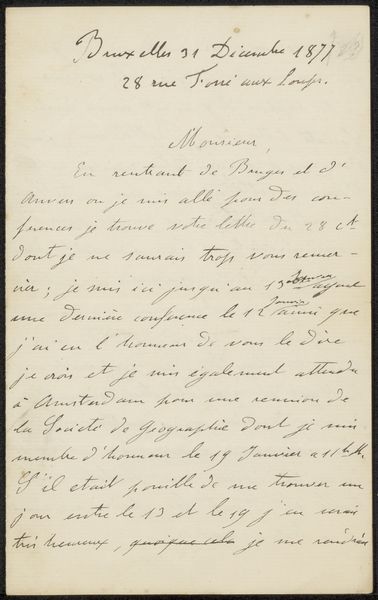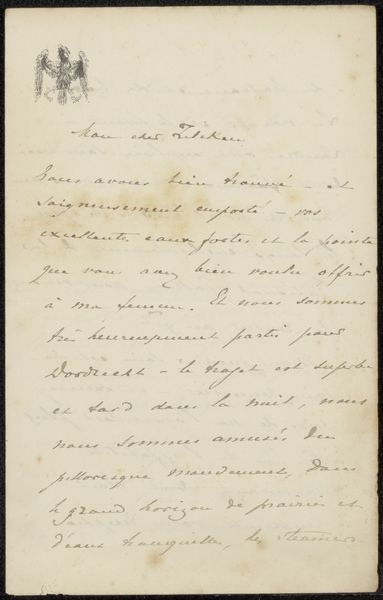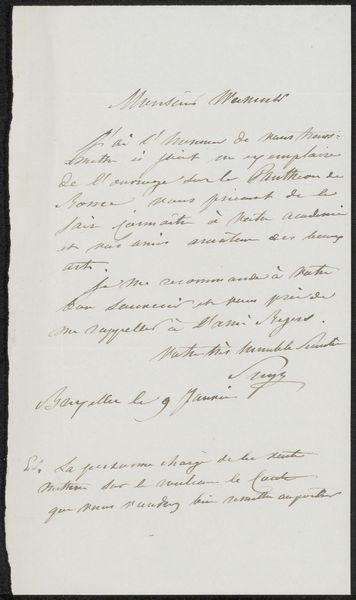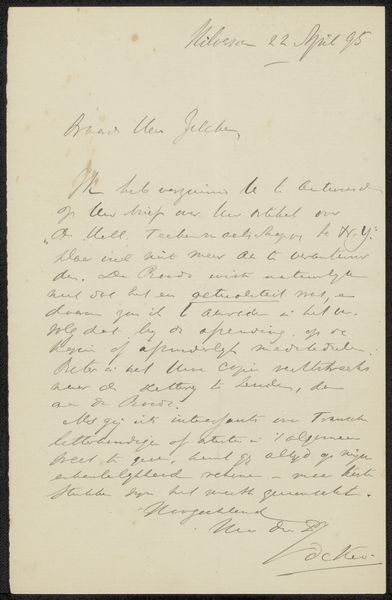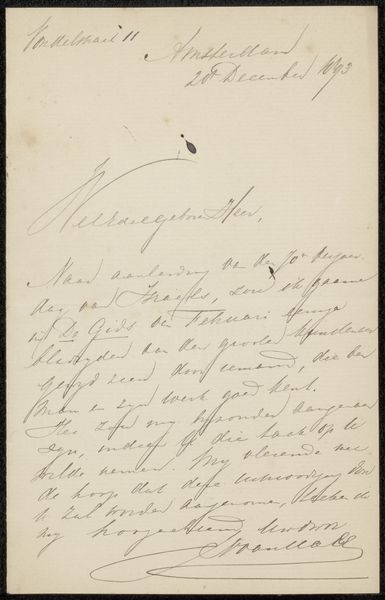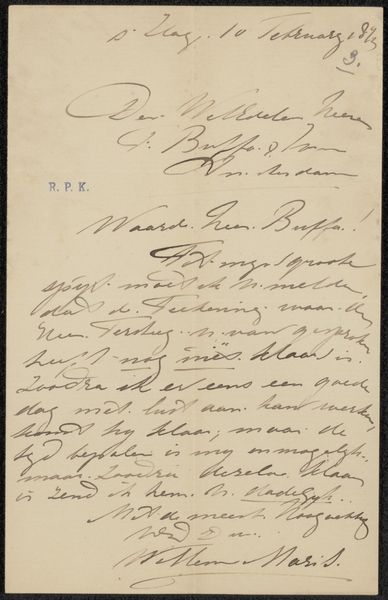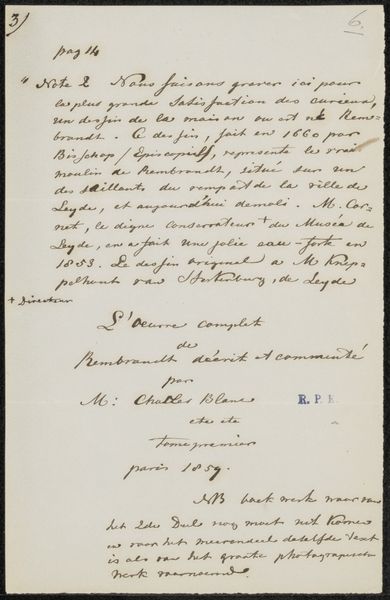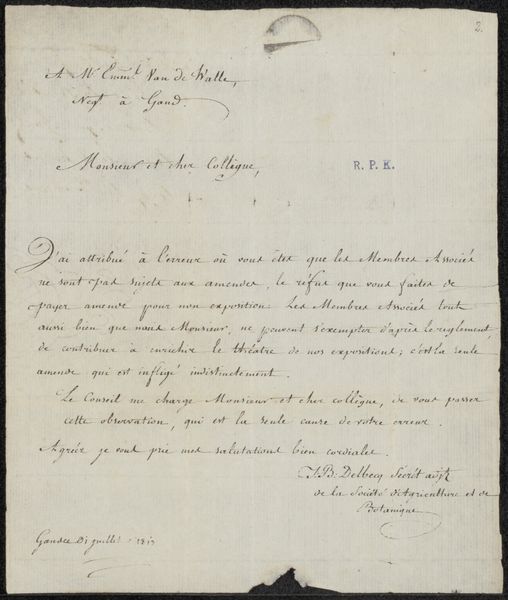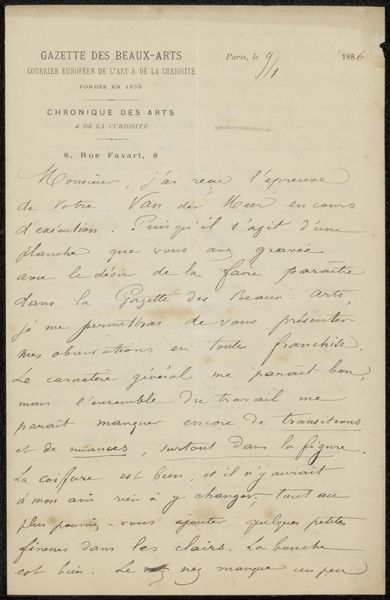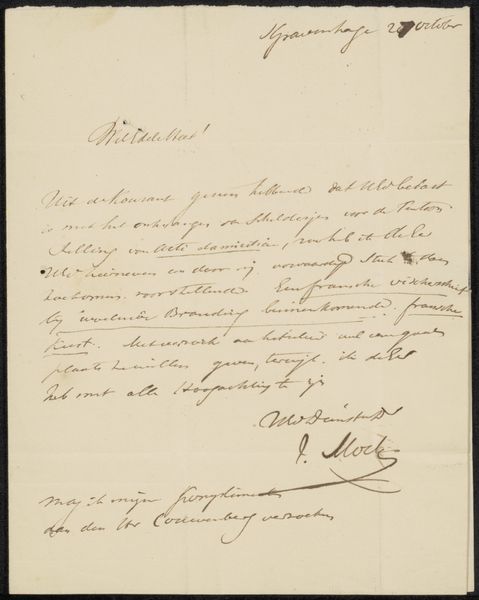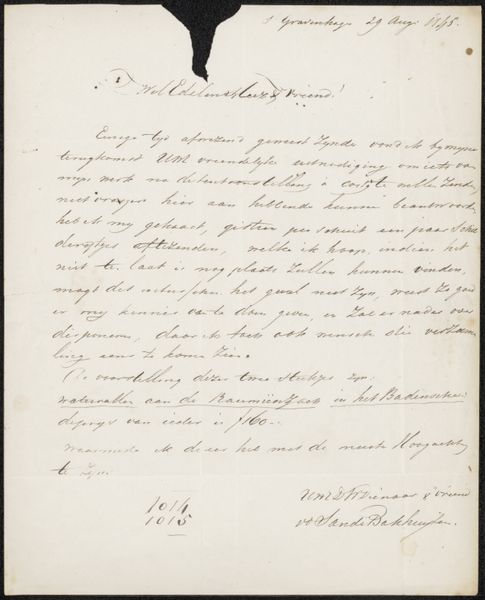
drawing, paper, photography, ink, pen
#
drawing
#
paper
#
photography
#
ink
#
hand-written
#
pen work
#
pen
#
calligraphy
Copyright: Rijks Museum: Open Domain
Curator: Before us, we have a piece entitled "Brief aan Philip Zilcken," possibly dating back to 1885, authored by Louis Gonse. Editor: Immediately striking is the fragility and intimacy. It’s not some grand painting, but this very personal artifact, the letter itself. The hand-written calligraphy in ink on paper speaks of time, care, and also about labor. Curator: Indeed. Gonse was a prominent figure, the editor of the Gazette des Beaux-Arts. This letter provides insight into the art world's circulatory system during that period, showcasing how influence was managed through personal exchanges and correspondence. We can see the heading of the Gazette printed on the paper. Editor: Right, and think about the materiality—the ink, the specific quality of the paper used for this printed letterhead. The letter itself is both message and medium, blurring those boundaries, you can’t ignore the class aspect of carefully chosen and manufactured writing paper. Curator: The letter mentions, among other things, obtaining a photograph of "ce tableau," which translates to "this painting." The presence of photography alongside drawing and the handwritten element marks a pivotal moment where art was increasingly reproduced and distributed. Gonse talks about only needing to see the image for "quelques heures" – this fast turnaround needed photography as a medium to support this activity. Editor: So it’s not only about high art itself but the entire support structure: reproduction, reviewing and dissemination. I wonder who made this particular ink, was it mass-produced? It's a glimpse into the artisanal trades that supported artistic discourse. We are getting an insight in the support workers labor also when we consider what other "hands" other than Louis Gonse where part of the fabrication and manufacturing process. Curator: Precisely. It shows the mechanics of art criticism, exhibition planning, and the social networks artists depended upon, especially with publications like the Gazette des Beaux-Arts acting as critical channels. The materiality also underscores this moment in the shift to art that was able to be mechanically reproduced. Editor: It leaves me contemplating how such seemingly ordinary objects played a critical role in constructing artistic reputations. A handwritten letter is more than just art, it is a work place that encapsulates relationships that shape art history. Curator: It serves as a valuable reminder that artworks don't exist in a vacuum but are intertwined with intricate social and economic systems. Editor: It shifts your gaze away from a finished piece towards an often hidden layer of artistic practice. The letter made manifest!
Comments
No comments
Be the first to comment and join the conversation on the ultimate creative platform.
